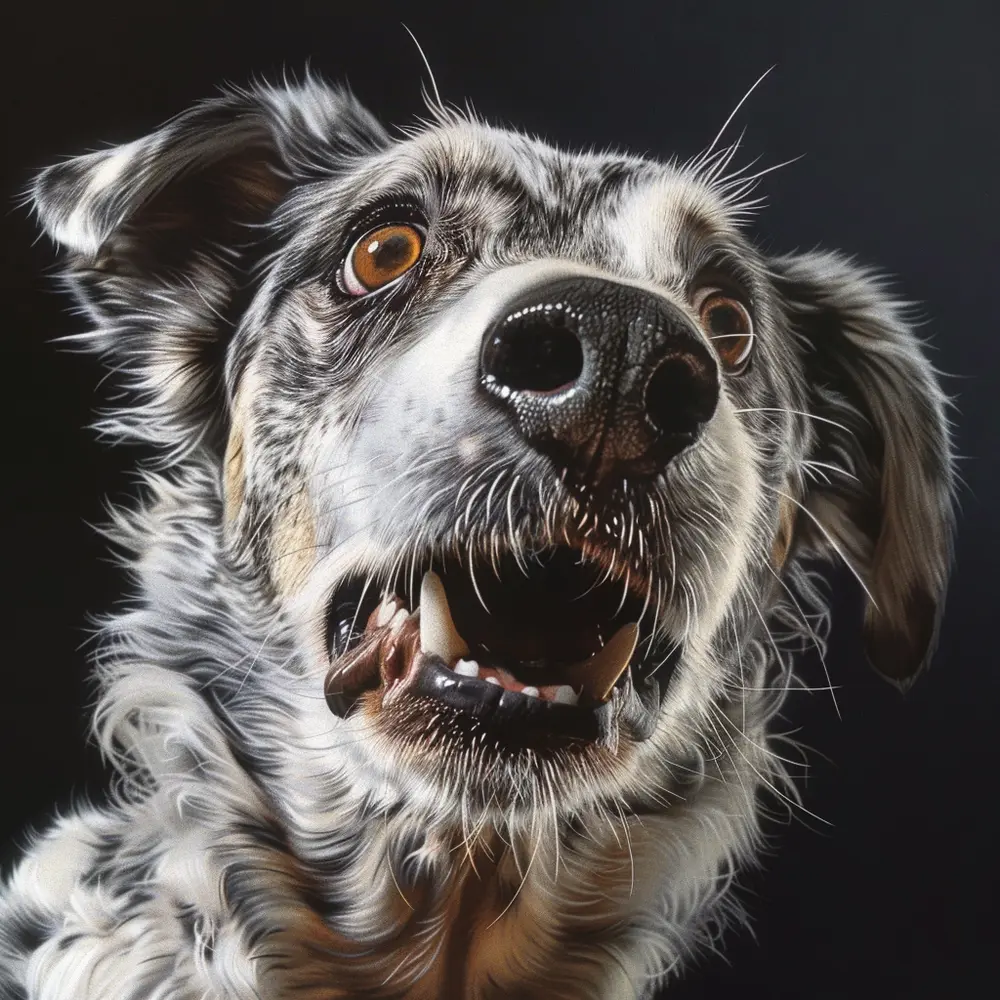Table of Contents:
Understanding Reactive Dogs and Their Behaviour
Reactive dogs often display responses that are out of proportion to the situation. Such behaviours can include excessive barking, growling, lunging, or snapping in response to specific stimuli in their environment, such as other dogs, strangers, or certain sounds. Understanding the root causes of these responses is key to addressing reactivity. Often, these behaviours stem from uncomfortable emotions, such as fear, frustration, or extreme excitement. It's crucial to note that reactivity is not indicative of a dog's personality or breed, but rather a response to particular triggers that can be managed with appropriate training strategies. It is also important to note that while often uncomfortable for humans, many aspects of reactive behaviour are part of a dog's normal behavioural repertoire.
To fully understand and assist a reactive dog, it's important to look beyond the surface behaviours and recognise the underlying emotions driving the reactions. A dog exhibiting reactivity may often be misunderstood as aggressive or unfriendly, while in reality, it's often much more complex. Acknowledging this is the first step towards building a foundation of trust and safety, forming the bedrock of effective dog training for reactive dogs.
Mindful observation and identification of the situations that lead to a reactive outburst are significant. By pinning down these moments, one can avoid or manage such instances more effectively. Using this knowledge, dog owners and behaviourists can develop tailored approaches that address the specific needs and triggers of their canine companions, setting the stage for successful and lasting behavioural change.
Identifying Triggers in Reactive Dogs
Pinpointing what prompts a reaction in dogs with reactivity issues is a critical element of effective training. These triggers can be diverse and, sometimes, not immediately apparent. To navigate this challenge, a careful and methodical approach is needed. It involves observing the dog's behaviour in different contexts and noting when the reactive behaviour occurs.
Before proceeding with a plan at home it is always advisable to have your pet see a veterinary professional, particularly if the onset of the behaviour is rapid and does not have a clear cause.
Common triggers may include, but are not limited to, specific sounds such as thunder or fireworks, unfamiliar people or animals, unusual objects, or particular situations that may induce stress such as a visit to the vet. An essential part of this process is keeping a detailed log of such events to identify patterns over time.
By understanding what triggers reactivity, one can implement preventative measures to reduce exposure or desensitise the dog to these stimuli gradually. This step is not about removing all stress from the dog's life – an unattainable goal – but rather, it about helping the dog learn to cope with and respond to stress in a more balanced way.
- Observing the dog's body language closely during potential trigger events
- Noting the intensity of the dog's reaction to various stimuli
- Recording the context in which the trigger occurred to understand contributing factors
A successful training plan for a reactive dog hinges on a comprehensive grasp of the particular triggers. By identifying these, professionals are better positioned to develop a customised approach that will help the dog become more confident and less prone to reactive episodes.
Comparative Analysis of Training Approaches for Reactive Dogs
| Pros of Training Strategies | Considerations of Training Strategies |
|---|---|
| Enhances trust and bond between owner and dog | May require a significant time investment |
| Reduces anxiety and stress in dogs | Results may vary depending on the individual dog |
| Improves socialisation with other dogs and people | Can be challenging for owners without experience |
| Increases dog's obedience and responsiveness to commands | Professional guidance is often necessary |
| Encourages a calm and predictable behaviour in public places | Some methods may not align with every owner's philosophy |
| Can prevent the development of aggressive tendencies | Requires consistent effort and reinforcement |
The Role of Positive Reinforcement in Dog Training
At the heart of transforming the behaviour of reactive dogs lies the principle of positive reinforcement. This method reinforces desirable behaviours by rewarding them, thus increasing the likelihood they will occur again. Unlike punitive techniques, positive reinforcement promotes learning in a way that enhances the dog's trust and strengthens the bond between dog and owner.
Rewards used in positive reinforcement can vary but often involve treats, verbal praise, petting, or playtime – essentially anything the dog finds pleasurable. Timing is vital; rewards must be given immediately following the desired behaviour to create a strong association. Consistently rewarding good behaviours and ignoring or redirecting unwanted behaviours encourage dogs to repeat those positive actions.
Specifically, for reactive dogs, positive reinforcement can help reshape their emotional responses to triggers. By pairing a previously scary or stressful trigger with a positive reward, the dog's perception changes over time, a process known as counter-conditioning. For instance, a dog who reacts to other dogs might receive a favourite treat every time he sees a dog at a comfortable distance, eventually leading to a more neutral or even positive emotional response to the sight of other dogs.
"By focusing on rewarding the behaviour we want, dogs are taught to make positive choices that lead to more rewards."
Through the application of positive reinforcement, reactive dogs can learn to manage their emotions and reactions effectively, building the confidence and skills necessary to navigate a world full of potential triggers.
Creating a Safe and Supportive Environment for Your Dog
Alongside training, the environment in which a reactive dog lives can significantly influence their behaviour and sense of security. It is essential to foster an atmosphere where they feel protected and at ease. An environment that minimises unexpected disturbances can help prevent feeling overwhelmed, making it easier for them to focus on learning during training sessions.
One aspect of creating this calming environment is through the design of a dedicated safe space for the dog. This area should be a place they can retreat to when feeling anxious. It can be a cosy crate or a specific room, equipped with their favourite toys and bedding. This space is a haven where no stressful training or challenging encounters occur.
Additionally, managing the dog's daily environment to limit exposure to known triggers without completely isolating them is key. Gradual introduction to various stimuli at a threshold where they do not react allows for controlled exposure that can help in desensitising them over time.
- Introduce changes gradually to avoid causing additional stress
- Mitigate loud and unpredictable noises that might provoke anxiety
- Ensure family members understand the importance of maintaining a calm and predictable routine
By establishing a safe and supportive setting, you are providing a strong foundation upon which your dog's confidence can be built. This environment sets the stage for successful training and helps reduce the overall level of reactivity in your dog's behaviour.
Step-by-Step Training Techniques for Reactive Dogs
Training a reactive dog requires patience, consistency, and a step-by-step approach that gradually builds the dog's ability to cope with their triggers. Each step of the training process is designed to incrementally increase the dog's confidence and reduce their reactive responses.
The first step involves introducing the dog to their triggers at a distance where they do not react, and gradually decreasing that distance over time. This technique, known as desensitisation, must be done at the dog's own pace to prevent overwhelming them and potentially exacerbating the reactivity. Please remember, it is always advisable to partake in complex behaviour modification under the guide of a qualified and experienced (veterinary) behaviourist.
The next stage incorporates the previously mentioned positive reinforcement, rewarding the dog for calm behaviour in the presence of a trigger. This is where the process of counter-conditioning comes into play, transforming the dog's negative associations with a trigger into positive ones.
- Begin with short training sessions in a familiar, distraction-free environment.
- Use a calm and reassuring tone to create a positive training atmosphere.
- Slowly introduce the triggers at a level where the dog notices them but does not react.
- Reward any signs of relaxed behaviour immediately with treats or praise.
- Gradually increase the difficulty by closing the distance or prolonging exposure to the trigger.
Bearing in mind the need for gradual progression and the dog's thresholds, this structured approach helps to ensure that you do not move too swiftly, which could cause a setback in the training process. As confidence grows, these steps enable the dog to form new, positive responses to the situations that once caused a reactive outburst.
The Importance of Consistency in Training Reactive Dogs
Consistency is a cornerstone of effective training, particularly when working with reactive dogs. A consistent approach ensures that the dog can predict outcomes and understand what is expected of them, which greatly aids in reducing anxiety and promoting learning.
For training to be successful, every person who interacts with the dog must apply the same methods. This uniformity helps prevent confusion and reinforces the desired behaviours. Owners should establish a set of clear rules and ensure everyone in the household adheres to them.
A consistent daily routine also plays a pivotal role in stabilising a reactive dog's environment. Regular times for walks, meals, training, and relaxation help to create a sense of order, making the world a more predictable place for the dog.
- Apply the same training techniques during each session.
- Use the same cues and reward system every time to strengthen learning.
- Keep training sessions regular but not overly long to maintain focus and prevent fatigue.
By maintaining consistency in training and daily life, reactive dogs become more self-assured, better at managing their emotions, and increasingly adept at navigating their triggers. This reliability becomes the framework upon which trust and behavioural change are built.
Managing Setbacks and Celebrating Progress
Even with the best-planned training strategies, setbacks can occur. Recognising that these are a natural part of the learning process is crucial for both the dog’s and the trainer’s wellbeing. When setbacks happen, it's important to remain patient and not to lose hope. Often, they are an indication to adjust the training approach or to revisit previous steps to reinforce the foundation.
It is equally important to celebrate the dog’s progress, no matter how small. Acknowledging and rewarding achievements bolsters the dog's confidence and motivates continued effort from both the dog and the trainer. Celebrations can be simple – an extra play session, a special treat, or verbal praise can all show appreciation for the dog's hard work.
- Reflect on what may have led to the setback to better manage future situations.
- Adjust the training approach as necessary, consider seeking professional advice.
- Take note of the progress made, keeping a log of milestones achieved.
By managing setbacks with understanding and commemorating the victories along the way, both dog and trainer can maintain a positive outlook. This balanced perspective encourages continued learning and growth, ultimately leading to a successful training outcome.
Professional Guidance: When to Seek Help from a Dog Professional
While many dog owners have success with training their reactive dogs, there may come a time when professional guidance is beneficial. Recognising when to seek help from a dog trainer can make a significant difference in managing reactivity effectively. If you find that your dog's behaviour isn't improving or is perhaps escalating despite your efforts, it might be time to consult a professional (veterinary) dog behaviour consultant or trainer.
A certified dog trainer or a behaviourist who has experience with reactivity can offer a fresh perspective and introduce new strategies. They can also provide support and reassurance, helping owners to navigate the emotional challenges that come with training a reactive dog.
- If your dog’s reactivity is causing safety concerns for you, your dog, or others
- When standard training methods do not yield the desired results
- If you feel overwhelmed, stressed, or unsure about your training approach
Enlisting the help of a professional doesn't mean you have failed. It is a proactive step towards building a more harmonious and understanding relationship with your dog. The ultimate goal is always the wellbeing of yourself and your canine companion.
Maintaining Confidence: Long-Term Strategies for Reactive Dogs
Maintaining the progress made during training and ensuring long-term success requires continuous effort and mindful strategies. It is about sustaining a positive trajectory that supports your dog's confidence and helps them manage their reactivity throughout their life.
Developing a routine that includes regular training sessions is vital. These sessions serve as refreshers for your dog, helping to fortify the positive behaviours learned and keeping their skills sharp. Including new variations or challenges can also keep your dog engaged and prevent backsliding.
Being proactive about your dog’s mental and physical health is also key. Activities that stimulate your dog's mind and provide a healthy outlet for their energy can significantly diminish the likelihood of reactive behaviours. These can include interactive toys, enrichment activities, or additional forms of exercise that suit your dog’s needs and personality.
- Continually assess and adjust your dog's routine and training needs over time.
- Keep an ongoing dialogue with professionals for updated advice and support.
- Stay vigilant to new triggers or changes in behaviour that may arise as your dog matures and their environment changes.
Maintaining your dog's confidence and managing their reactivity is an ongoing journey, not a destination. By being attentive and adaptable in your approach, you provide the best support for your reactive dog, facilitating a fulfilling and happy life together.
Conclusion: The Journey to a More Confident Dog
The journey towards boosting a reactive dog's confidence is based on understanding, patience, and a commitment to ongoing learning and adaptation. The strides made through positive training and a supportive environment address not only the symptoms but the root causes of reactivity, paving the way for a well-balanced and happier dog.
It's crucial to remember that each dog is an individual, and progress will vary. Celebrating every triumph, no matter the size, and learning from each hurdle will foster resilience in both the dog and the trainer. The ultimate goal is to enhance the quality of life for your dog, allowing them to navigate the world with more ease and assurance.
With the toolkit of consistent training, environmental management, celebrating wins, acknowledging setbacks, and professional advice when needed, you can steer your reactive dog towards a path of increased confidence. It is a rewarding journey that strengthens the bond between you and your furry companion, rendering the efforts of today the rewards of tomorrow.
Essential Training Tips for Improving Reactive Dog Behaviour
What is a reactive dog and what behaviour does it display?
A reactive dog typically exhibits behaviours such as excessive barking, growling, lunging, or snapping in response to stimuli like other dogs, strangers, or various noises. These overreactions are usually rooted in discomfort, fear, or stress rather than aggression.
How can I help reduce my dog's reactive behaviour?
Reducing reactive behaviour involves a combination of consistent training using positive reinforcement, identifying and managing triggers, and fostering a supportive environment. Special treats and rewards can be used to create positive associations with triggers, and a gradual, patient approach is important for lasting change.
What is positive reinforcement and why is it important in dog training?
Positive reinforcement is a training method that involves rewarding desirable behaviours to increase their recurrence. In the context of reactive dogs, it helps to replace fear-based responses to triggers with positive reactions by associating the trigger with something enjoyable, like treats or praise.
What should I do if my dog's reactivity is not improving?
If your dog's reactivity is not improving, it may be beneficial to consult a professional dog trainer or behaviourist with experience in reactivity. They can provide tailored guidance and support, helping you refine your training approach to better suit your dog's needs.
How can I maintain progress and manage my dog's reactivity in the long term?
Long-term management of reactivity requires ongoing training, maintaining a consistent routine, and being proactive about your dog's mental and physical health. Continue to provide refresher training sessions and engage in activities that offer mental stimulation and physical exercise to help your dog manage stress and energy levels.







